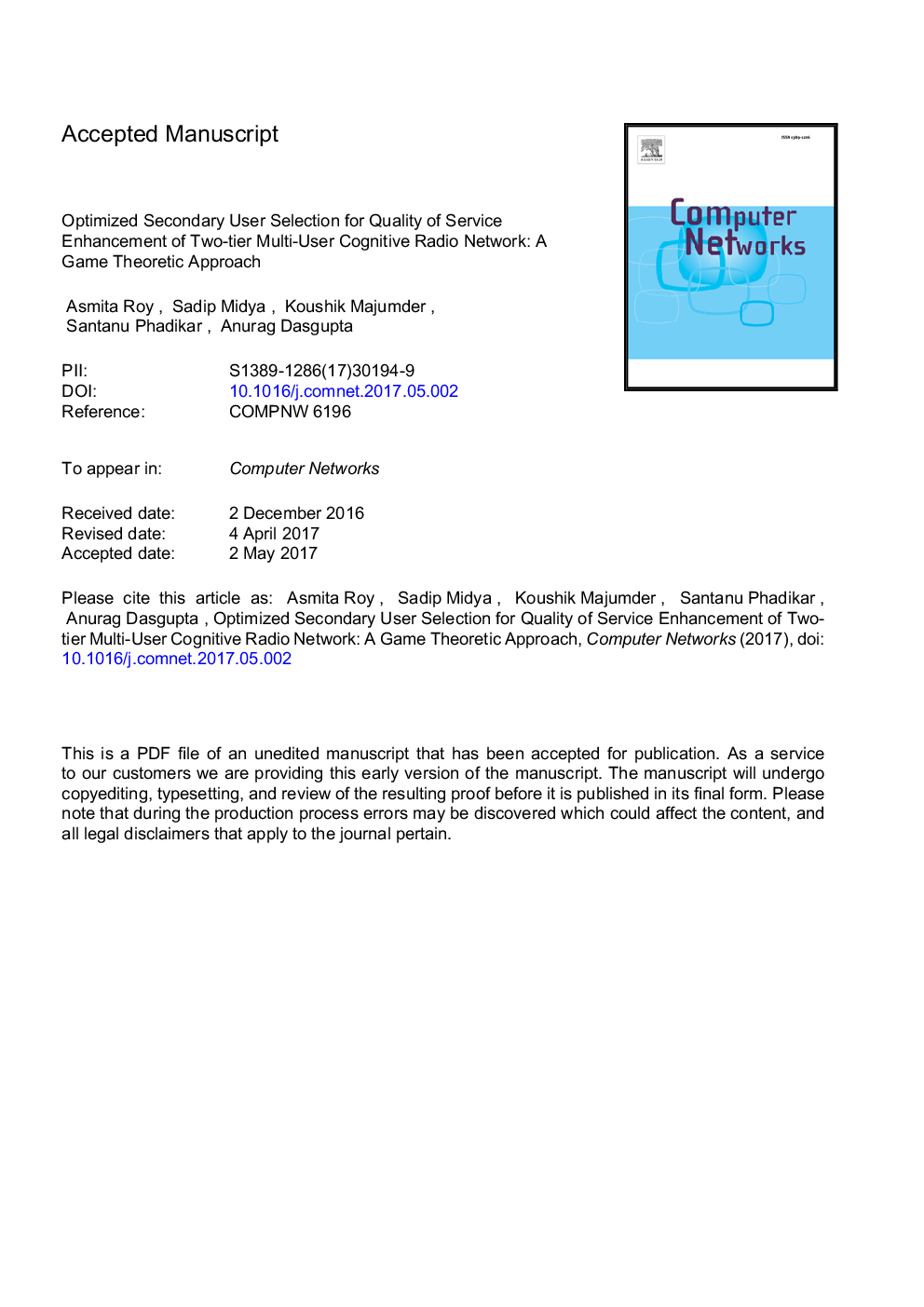| Article ID | Journal | Published Year | Pages | File Type |
|---|---|---|---|---|
| 4954704 | Computer Networks | 2017 | 33 Pages |
Abstract
Cognitive Radio Networks (CRN) is the solution for the spectrum scarcity problem, that has surfaced with the exponential increase in number of mobile users. In CRN, the cognitive devices sense the spectrum, and transmits, on detecting an available channel. Thus CRN resourcefully utilize the idle spectrum bands. In CRN, the users are classified into two types - Primary users and Secondary users. Secondary users are further classified into two tiers- Real Time users (RT) and Non-Real Time users (NRT). Users from both the tiers share a single channel for transmission, resulting in efficient spectrum usage. However, with ever growing number of secondary mobile users having diverse QoS requirements, the cognitive interactions among them need to be optimized. This paper uses game theory to study the conflict and cooperation among the two tiers of secondary users. An auction game model is proposed that analyzes the complex decision making process and efficiently allocates an idle channel to a pair of RT and NRT secondary users from a pool of users. The game model is further extensively analyzed mathematically, using Markov chain, showing a reduction in user Blocking probability, user Dropping probability, Channel Saturation probability and increase in user Acceptance probability, compared to the Basic One-Tier CRN and Non-Optimized Two-Tier CRN. The optimized network model is then simulated using Qualnet 7.1. The simulation result shows improved Bandwidth Utilization Efficiency, Spectral efficiency and increased number of secondary users served, compared with respect to Basic One-Tier CRN and Non-Optimized Two-Tier CRN.
Related Topics
Physical Sciences and Engineering
Computer Science
Computer Networks and Communications
Authors
Asmita Roy, Sadip Midya, Koushik Majumder, Santanu Phadikar, Anurag Dasgupta,
